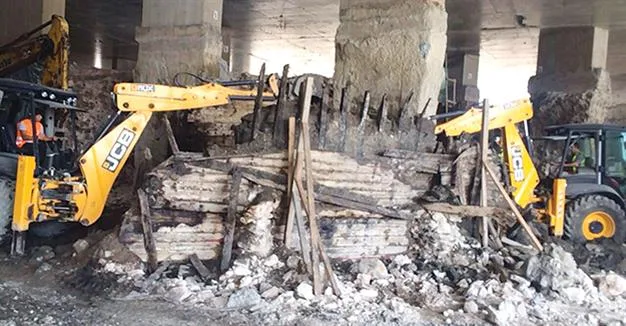The breakwater of the ancient Theodosius Harbour has been broken into pieces by construction equipment, against a decision by the Istanbul Protection Council for its removal with scientific methods under the inspection of experts.

Theodosius Harbour, the best known harbor of the Byzantine era, was discovered during archaeological excavations initiated by the Istanbul Archaeology Museum in 2004 in the city’s Yenikapı district during the construction of a new metro line and the Marmaray tunnel under the mouth of the Bosphorus Strait.
“This structure should be numbered and removed carefully during the removal of the findings,” Istanbul Archaeology Museum officials warned.
Ancient resources noted ancient-era breakwaters were put to the sea by filling wooden chests with cement and stones. This expensive system is known to have been realized with the support of emperors. But not even one breakwater constructed through this method had survived to modern times. For the first time a solid sample of this breakwater was found in Yenikapı.
The Istanbul Protection Council decided for the removal of this unique historic artifact with scientific methods under the inspection of expert conservators.
The council also decided on the protection of the breakwater’s wooden parts in water tanks and pools, the conservation of the removed studs and the display of a five-meter section of the wall.
Thirty-six shipwrecks and thousands of cultural artifacts were found in the harbor excavations in 2006, while findings from the Neolithic era proved Istanbul’s recorded history stretched back 8,500 years. Only some parts of the Theodosius Harbour, however, were found during the Marmaray and metro excavations, despite information that the extent of the harbor was larger. Both the lighthouse and the breakwater of the harbor were yet to be discovered.
Similar architectural structures were found during previous excavations at Yenikapı. A nearly five-meter-wide and L-shaped architectural structure could have been the breakwater of the Theodosius Harbour, according to archaeologists.
Source: Hurriyet Daily News [August 11, 2016]